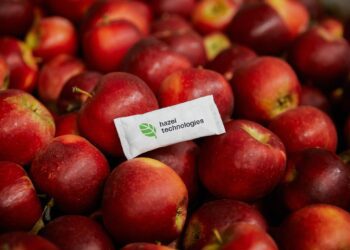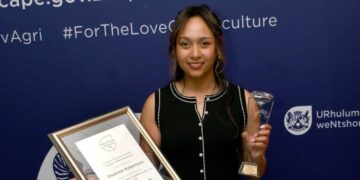We throw them away or burn them. Sometimes we use them as pillow stuffing, others use them as decoration in their houses. However, chicken feathers have much more useful benefits than we think.
The poultry industry generates more than five billion tonnes of chicken feathers worldwide, and much of this waste ends up in landfills. In South Africa there are 19 million broiler chickens killed every month and 85% of their feathers are either ground into feather meal and mixed into livestock feed as a protein source, or just thrown away.
Scientist and innovators across the globe are looking into many unconventional methods to turn this waste into products such as clothing, energy or as a source of protein.
Chicken feathers are made up of a protein known as keratin, the same material from which fingernails, wool, hair and hooves are made.
According to The Poultry Guide the protein has characteristics like that of cellulose, the starch from which paper and wood is made.
“The chicken feathers contain keratin which is like wool, but the only difference is, the surface area of the feather is longer due to the diameter of the fibre, as it is smaller. In this way, the fiber can absorb more as compared to the wool or as compared to the cellulose fibers,” reads the website.

Local innovations
In 2015 a researcher at the University of KwaZulu-Natal, Tamrat Tesfaye, conducted a study as part of his PhD research where he used chicken feathers to produce shirts and socks, and even automotive parts.
Tesfaye also believed that it is possible to turn chicken feathers into shampoos because of their moisturising properties.
“The keratin proteins could also be incorporated into shampoos and conditioners and hair-loss products. Chicken feathers, much like woollen fibres which are 90 percent keratin, could also be spun into fibre,” he tells IOL.
Most recently a wine farm in the Western Cape successfully used chicken feathers to nourish the soil in which grapes grow.
A well-known American researcher Walter Schmidt is leading the revolution and is the first person in the world to turn chicken feathers into paper.

According to Morden Farmer Schmidt is now one of many researchers internationally working with chicken feathers. To date he estimates he’s processed at more than 4 tonnes of them.
Schmidt has been involved in many projects working to use chicken feathers in making useful items, including dishes and furniture, clothing, circuit boards, wall insulation, filters and planting pots.
“Feathers are used to make hurricane-proof roofing, shoe soles, and lightweight auto dashboards and glove compartments leading to fuel efficiency,” reads the article.
Schmidt is quoted as saying that they will soon produce cosmetics and car parts from the feathers. “The feather fibre grinds to a powdery talc making the keratin useful in beauty products.”
There are endless opportunities and lots of money to be made, even baby diapers. “When a diapered baby sits on a couch, the liquid can be squeezed out. But by adding keratin, the fibre isn’t compressible. It remains absorbent, so the water stays in,” he says.
While most of these experiments remain just that, a few patents involving the processing of chicken feathers have been filed. You may soon be using transformed versions of this widely available waste product in your everyday life.
ALSO READ: Employment and empowerment is real in the chicken industry
Get Stories of Change: Inspirational stories from the people that feed Mzansi.
















